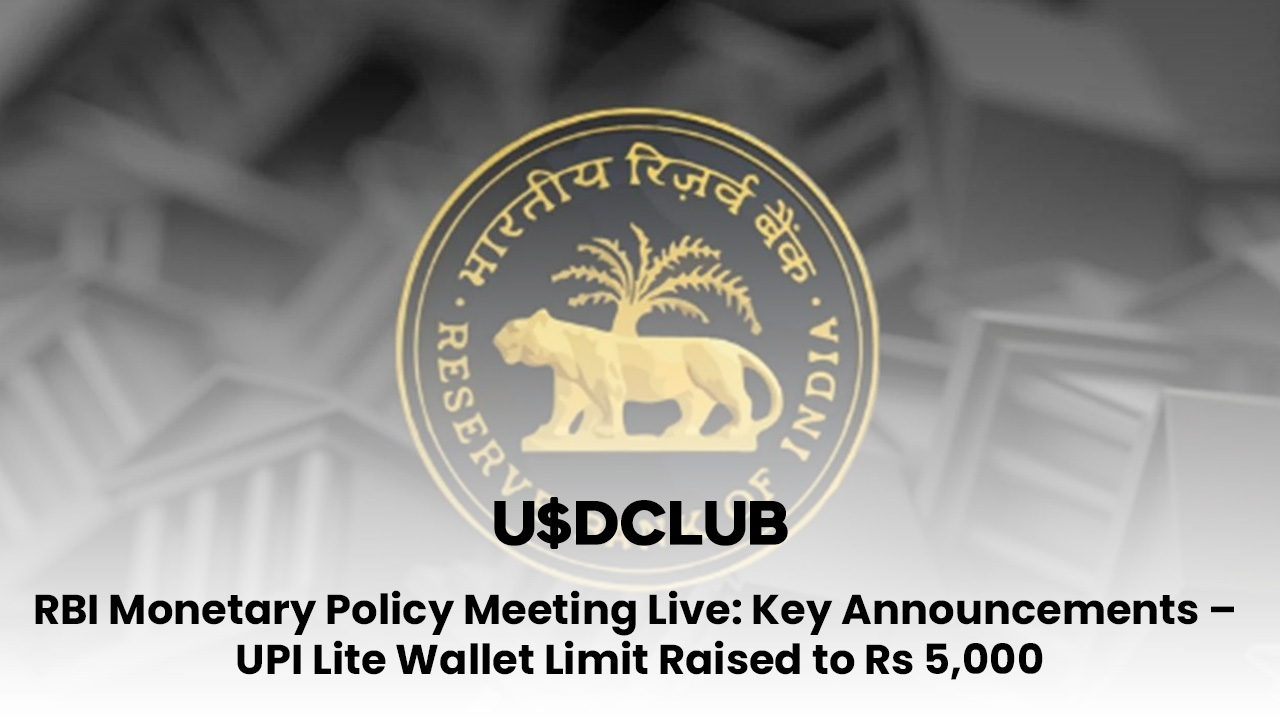In a significant move aimed at enhancing the digital payment ecosystem in India, RBI Governor *Shaktikanta Das* announced an increase in the *UPI Lite wallet limit* from *Rs 2,000 to Rs 5,000*. This change is expected to boost low-value digital transactions, making it easier for individuals to complete small payments without the need for constant internet connectivity.
As part of the ongoing efforts to promote *financial inclusion* and encourage the use of digital platforms for payments, the UPI Lite enhancement is set to revolutionize the way small-value transactions are conducted across India, especially in semi-urban and rural areas.
What Is UPI Lite?
UPI Lite is a simplified version of the Unified Payments Interface (UPI), which allows users to make *small-value transactions* without needing internet connectivity or a complex authentication process. Introduced in *September 2022*, UPI Lite was designed to ease congestion on the UPI platform, reduce the load on banking systems, and promote faster payments for transactions below Rs 200.
Key Features of UPI Lite:
– *Offline Mode*: UPI Lite operates offline, allowing users to make payments without an internet connection, which is especially useful in areas with poor network connectivity.
– *Instant Payments: Transactions through UPI Lite are processed instantly, enabling seamless purchases in places like **kirana stores, local markets, and small businesses*.
– *No Need for PIN Authentication*: For small-value payments, UPI Lite eliminates the need for PIN authentication, speeding up the transaction process.
– *Daily Transaction Cap: Earlier, the transaction limit was capped at **Rs 2,000*, but with the latest increase, users can now load up to Rs 5,000 into their UPI Lite wallets.
Impact of Raising the UPI Lite Wallet Limit to Rs 5,000
The increase in the UPI Lite limit from Rs 2,000 to Rs 5,000 is expected to have a *far-reaching impact* on India’s digital payment landscape. Here’s how this change could benefit users and the broader financial ecosystem:
-
*Greater Convenience for Users*:
With a higher wallet limit, users can now conduct more transactions without needing to reload their UPI Lite accounts frequently. This increased limit will cater to a broader range of small and medium-value transactions, offering users more flexibility in everyday purchases.
-
*Boost to Digital Payments*:
India’s rapid transition towards a *cashless economy* gets a further push with this move. UPI Lite’s enhanced limit encourages more people, especially those in rural or remote areas with limited internet access, to switch to digital modes of payment.
-
*Ease for Small Businesses*:
Small retailers, street vendors, and merchants, who deal primarily in low-value transactions, will benefit greatly from the increased limit. With easier and faster payments through UPI Lite, businesses can expect *quicker settlements* and improved customer experience.
-
*Reduced Load on Banking Infrastructure*:
By shifting small-value transactions to UPI Lite, the pressure on the main *UPI infrastructure* and banking systems is reduced. This ensures smoother and more efficient functioning of the overall UPI network, especially during peak transaction times like festivals or sales seasons.
-
*Promoting Financial Inclusion*:
The RBI’s move aligns with the government’s broader goal of *financial inclusion*, ensuring that even those in the remotest corners of the country have access to a simple, efficient, and secure method of making payments. The offline nature of UPI Lite is particularly beneficial in areas with poor connectivity, promoting wider digital adoption.
RBI’s Commitment to a Cashless Economy
Governor Shaktikanta Das emphasized that the UPI Lite initiative is part of the RBI’s broader vision to reduce the reliance on cash and promote *seamless, digital financial transactions*. Since the launch of UPI in 2016, it has transformed the way payments are made in India, enabling millions of people to transact digitally.
The increase in the UPI Lite limit is a continuation of this effort. With *over 10 billion monthly UPI transactions*, the RBI’s policy shift is set to make the payment ecosystem even more efficient and accessible to the common person.
The Rise of UPI: A Global Phenomenon
UPI has not only revolutionized payments within India but has also attracted international attention. *Countries like Singapore, Bhutan, and Nepal* have adopted UPI for cross-border payments, and talks are ongoing with *several other countries* to integrate UPI into their payment systems. This global recognition underscores the success of UPI and its potential to be a key player in the future of global financial transactions.
By enhancing UPI Lite, the RBI aims to strengthen this platform further, ensuring it remains a *world-class payment system* while promoting the growth of *digital transactions* both within India and across borders.
Future of Digital Payments in India
With the rise of digital payment methods like UPI, India is on the fast track to becoming a *cashless economy. According to industry experts, digital payments in India are expected to reach *$10 trillion by 2026**, with UPI being a dominant contributor to this growth.
The RBI’s decision to raise the UPI Lite limit reflects a forward-thinking approach, ensuring that *small-value transactions* are equally supported in this digital revolution. As more users adopt UPI Lite for their daily transactions, it is likely to become the *go-to solution* for low-value, everyday payments.
What’s Next for UPI?
As UPI continues to grow in adoption, the RBI is expected to roll out *more enhancements* to ensure it remains at the forefront of digital innovation. *Upcoming developments* could include integrating UPI with more global payment systems, improving its security features, and introducing *new use cases* for UPI across various sectors, including education, healthcare, and government services.
The future of UPI is bright, and with initiatives like UPI Lite, the platform is well-positioned to cater to *all segments of the population*—from urban digital users to rural India.
Conclusion: A Move Towards Greater Financial Accessibility
The RBI’s decision to raise the UPI Lite wallet limit to Rs 5,000 is a *positive development* for India’s digital payment landscape. It offers greater convenience, accessibility, and ease of use for individuals and businesses alike. By promoting small-value, offline transactions, this move supports the broader goal of a *financially inclusive, cashless economy*.
As India continues its march towards becoming a global leader in digital payments, the RBI’s latest policy adjustment is another step forward in making financial transactions *more accessible, efficient, and secure* for all.
For more updates on the latest developments in the financial markets and insightful investment strategies, stay tuned to *USDCLUB.us*, where we provide timely news and analysis from the world of finance. Whether you’re a seasoned investor or just starting, staying informed is key to navigating today’s dynamic market.







